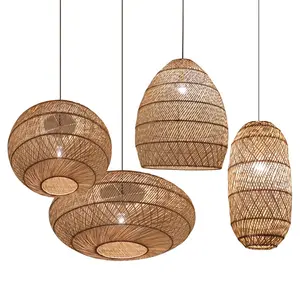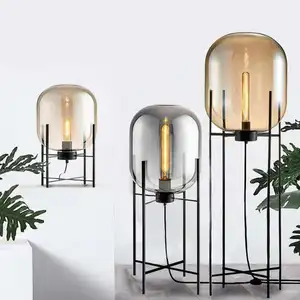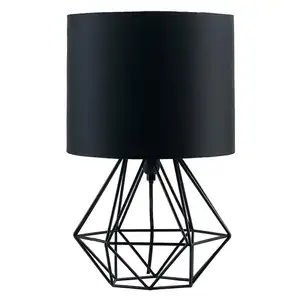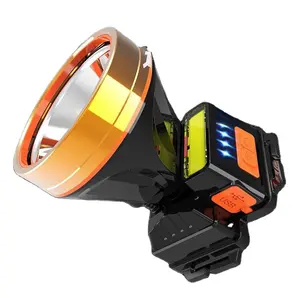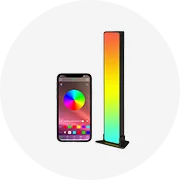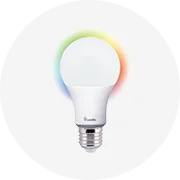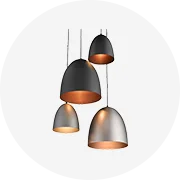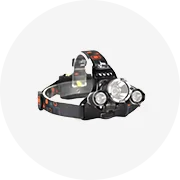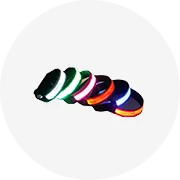Sektörünüzde popüler






12V dayanıklı yatak odası parti tatil dekorasyon LED Neon işık esnek LED şerit
₺66,99 - ₺74,16
Minimum Sipariş Miktarı: 50 Metre



Şerit ışık üreticisi açık Led şerit ışıkları su geçirmez 3000k/4000k/6500k Cob Led şerit renkli
Gönderime Hazır
₺20,51 - ₺23,24
Minimum Sipariş Miktarı: 20 Metre
Parça başına nakliye: ₺32,81







Toptan yüksek lümen 24V 128Leds/M 160lm/w led şerit ışık Smd2835 Led esnek şerit ışık beyaz 2835 led şerit ışık
₺61,52 - ₺75,19
Minimum Sipariş Miktarı: 1 Metre




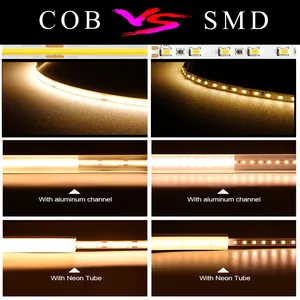


Her yerde kesme COB Led şerit 480 çip 8W 12V 24V esnek COB Led şerit
Gönderime Hazır
₺29,05 - ₺33,84
Minimum Sipariş Miktarı: 50 Metre
Parça başına nakliye: ₺39,31







İnce 5mm Cob Led şerit 384leds/m yumuşak esnek Dc12v/24v ışık çubuğu sıcak soğuk beyaz Cob şerit ışıkları
₺30,42 - ₺46,14
Minimum Sipariş Miktarı: 2 Metre







2024 yüksek voltajlı kendinden yapışkanlı COB akıllı ışık şeridi beyaz/sıcak beyaz 288 LED/M IP67 katı silikon led şerit 110V/220V
₺25,98 - ₺68,35
Minimum Sipariş Miktarı: 2 Metre






Katı çizgi esnek Cob Led şerit ışık 10metre Led ışık bant şeridi kısılabilir sihirli yumuşak Cob şerit 180 derece görüş açı
Gönderime Hazır
₺235,81 - ₺239,23
Minimum Sipariş Miktarı: 200 Metre
Parça başına nakliye: ₺2.108,93






Tatil dekorasyon USB şarj 16 renkler 24 tuşları uzaktan kumanda 2835 RGB LED ışık şeridi
Gönderime Hazır
₺38,28 - ₺145,59
Minimum Sipariş Miktarı: 2 Adet
Parça başına nakliye: ₺375,24




SPI TTL adresli yan görünüm 3000K 4000K 6000K RGBW beyaz kırmızı yeşil RGB 24V 12V katı ışık hiçbir nokta COB yan yayan LED şerit
₺34,18 - ₺170,88
Minimum Sipariş Miktarı: 5 Metre






Mükemmel katı çizgi esnek Cob Led şerit işık dim yumuşak Cob şerit aydınlatma için 180 derece görüş açısı ile
₺75,19 - ₺100,82
Minimum Sipariş Miktarı: 1 Metre






20x20mm siyah alüminyum kapak led sihirli katı şerit ışık 12V 60LEDs ws2811 programlanabilir piksel ışık bar profil şerit
Gönderime Hazır
₺293,91 - ₺328,08
Minimum Sipariş Miktarı: 5 Metre
Parça başına nakliye: ₺372,85






DC12V yüzme havuzu ışıkları Ip68 sualtı Led ışık şerit su geçirmez Smd5050 Smd2835 katı silikon akıllı Led şerit işık
₺153,79 - ₺215,31
Minimum Sipariş Miktarı: 10 Metre
İlgili Aramalar:






DC12V 24V düz renk esnek şerit 120leds 2835 SMD sıcak beyaz samsung şerit led ışık
₺20,51 - ₺102,53
Minimum Sipariş Miktarı: 50 Metre






Sualtı IP68 su geçirmez led şerit ışık 20m hiçbir basınç bırak yüzme havuz ışığı RGB LED şerit katı silikon ışık şeridi
Gönderime Hazır
₺123,03 - ₺164,04
Minimum Sipariş Miktarı: 10 Metre
Parça başına nakliye: ₺301,43






10 metre hiçbir voltaj düşüşü DC24V 60LEDS/M SMD5050 10 W/m IP65 su geçirmez LED ışık şeridi
₺59,81 - ₺71,77
Minimum Sipariş Miktarı: 100 Metre






Fabrika WholesaleIP68 su geçirmez 24V katı kapsüllü su geçirmez çeşme yüzme havuzu dış mekan aydınlatma ledi ışık şeridi
Gönderime Hazır
₺13,67 - ₺51,27
Minimum Sipariş Miktarı: 200 Metre






Toptan güvenli alçak gerilim kendinden yapışkanlı düz renk ev TV arkaplan ışığı dekoratif LED ışık low alçak gerilim vurgulamak şerit
₺10,94 - ₺18,12
Minimum Sipariş Miktarı: 5 Metre





20x20mm siyah alüminyum kapak led sihirli katı şerit işık 12V 60LEDs ws2811 programlanabilir piksel işık çubuğu profil şerit
₺17,09 - ₺20,85
Minimum Sipariş Miktarı: 5 Akre






Metalux su geçirmez açık alan cob'u şerit işık beyaz Rgb Cct Led şerit Ip67 katı ekstrüzyon silikon su geçirmez 320 480 528 Led Cob
₺57,42 - ₺91,94
Minimum Sipariş Miktarı: 50 Metre






Fabrika doğrudan ucuz 10Mm genişlik Led şerit Lichtstreifen Led noel katı silikon ışıkları akıllı Led şerit ışık şeridi
₺23,24 - ₺56,39
Minimum Sipariş Miktarı: 5 Metre






320led/m 8mm led şerit işıklar 10w 12v/24v şebeke led şerit işıklar odası ip20 katı led ışık şerit
₺16,75
Minimum Sipariş Miktarı: 3000 Metre






2024 yüksek voltajlı kendinden yapışkanlı COB akıllı ışık şeridi beyaz/sıcak beyaz 288 LED/M IP67 katı silikon led şerit 110V/220V
₺41,01 - ₺52,63
Minimum Sipariş Miktarı: 1000 Metre
- 35%






Fabrika fiyat DC12V 24V COB şerit RA90 sıcak soğuk doğal beyaz lineer dim FCOB LED şerit ışık ev dekorasyon
Gönderime Hazır
₺257,34 - ₺335,26
Minimum Sipariş Miktarı: 2 Rulo
Parça başına nakliye: ₺279,55






IP67 su geçirmez Led şerit 5050 beyaz 3000k-6000k DC12V/24V 60Leds/m katı silikon dolum açık şerit lamba
₺97,40 - ₺105,26
Minimum Sipariş Miktarı: 5 Metre






Dar ışın açısı 30 derece SMD 5050 60LED/M DC 12V/24V 12W tek renkli LED şerit duvar yıkama ışığı
₺174,30 - ₺199,93
Minimum Sipariş Miktarı: 10 Metre






LED şerit ışıklar çubuğu 12v LED ışık sert şeritler vurgulamak beyaz 6000K SMD2835 3030 12LEDs/M sergi ekran
₺30,76 - ₺54,68
Minimum Sipariş Miktarı: 1 Takım






1M/3M/5M IP68 COB LED şerit yüksek yoğunluklu su geçirmez katı muhafaza esnek bant ışık DC12V 24V 8mm 10mm 480LEDs/m kırmızı yeşil mavi
₺31,45 - ₺67,67
Minimum Sipariş Miktarı: 50 Metre






Görünmez led 5m makara FCOB COB lambası hiçbir LED nokta 3000K 4000K 6000K esnek nokta ücretsiz led şerit
₺30,42 - ₺61,18
Minimum Sipariş Miktarı: 2 Metre






DC5V 10mm genişlik dijital LED esnek şeritler, SMD 5050 RGBW LED,30 adet LED/m ile 30 adet SK6812/m şerit aydınlatma
₺170,88 - ₺205,05
Minimum Sipariş Miktarı: 2 Adet



IP68 su geçirmez tek renk sabit akım LED şerit RA90 DC24V 3000K/4000K/6500K katı ekstrüzyon açık LED şerit
₺242,65 - ₺252,90
Minimum Sipariş Miktarı: 2 Metre






Cob led şerit 120/320/480/528/led/m 24v 8mm PCB 3000k 4000k 6000k esnek cob led şerit
₺16,07 - ₺77,92
Minimum Sipariş Miktarı: 50 Metre






Rekabetçi fiyat katı ekstrüzyon su geçirmez sabit akım 70leds/m SMD2835 24V esnek LED şerit ışık ip68 led şerit 5m
₺52,98 - ₺66,65
Minimum Sipariş Miktarı: 200 Metre






Rekabetçi fiyat katı ekstrüzyon su geçirmez sabit akım 70leds/m SMD2835 24V esnek LED şerit ışık ip68 led şerit 5m
Gönderime Hazır
₺17,78 - ₺30,76
Minimum Sipariş Miktarı: 50 Metre
Parça başına nakliye: ₺876,93






Şeffaf katı ekstrüde süper parlak ip68 su geçirmez açık 480leds cob 24v cob şerit için
Gönderime Hazır
₺95,69 - ₺99,11
Minimum Sipariş Miktarı: 5 Metre
Parça başına nakliye: ₺85,10






Açık kapalı halat işık 5050 60leds 24V katı silikon su geçirmez güvenli esnek led şerit işıklar renkler RGB
₺6.424,87 - ₺7.757,68
Minimum Sipariş Miktarı: 1 Karton






Açık su geçirmez ışık şeridi 24V2835 mühendislik modeli 120 ışık katı lastikli IP68 alçak gerilim ışık şeridi 100 metre
₺27,34 - ₺44,43
Minimum Sipariş Miktarı: 1000 Metre






Yüksek yoğunluklu katı tasarım esnek 480leds su geçirmez IP67 24VDC 11W CRI90 4000K açık beyaz COB ışıkları led şerit ışık
Gönderime Hazır
₺26,66 - ₺30,76
Minimum Sipariş Miktarı: 50 Metre
Parça başına nakliye: ₺24,27






GM MJH1101 5m neon led şerit işık 12v esnek led halat işık fabrika toptan neon parti flex led ayıran silikon şeritler
₺341,75 - ₺428,90
Minimum Sipariş Miktarı: 300 Takım






Fabrika satış S şekil esnek SMD 5050 48LEDs RGB IP20 hiçbir reklam için su geçirmez LED şerit işık işık ışıklar şerit
Gönderime Hazır
₺52,98 - ₺85,44
Minimum Sipariş Miktarı: 1 Metre
Parça başına nakliye: ₺191,73






Yüksek voltajlı kendinden yapışkanlı COB akıllı ışık şeridi beyaz/sıcak beyaz 288 LED/M 320 LED/M IP67 katı silikon led şerit 110V/220V
₺22,22 - ₺33,50
Minimum Sipariş Miktarı: 100 Metre
En iyi kategoriler
katı led ışık şerit hakkında
Alibaba.com 2392 katı led ışık şerit ürünü sunuyor. oto cad düzeni, proje, montaj ve agi32 düzeni gibi size yönelik çok çeşitli katı led ışık şerit seçenekleri bulunmaktadır. app kontrol, dokunmatik kontrol ve ses kontrolü katı led ışık şerit arasından ve ayrıca evet, hiçbir katı led ışık şerit arasından seçim yapabilirsiniz.Ve katı led ışık şerit ürününün pvc, bakır olmasını seçebilirsiniz.
